Government Street in Mobile runs right through downtown and into the Bankhead tunnel, underneath the Mobile River and into a merge with Highway 90, taking drivers east across the Mobile Bay. The tunnel is only 2/3 of a mile long, and feels very quick to all drivers. I-10, a stone’s throw away, tunnels underneath the river as well. If the tunnels were to suddenly become unavailable to cars, it would turn into a nightmare for drivers, who instead of spending a quick minute going underneath the river in less than a mile, would have to divert seven miles up and around the towering Cochrane-Africatown Bridge. As the tunnels are off limits to pedestrians, I had to walk all of those miles today.
Going north along the western banks of the Mobile River took me up confusing roads through endless rail yards. Nearly an hour into the day’s walk, underneath the hot sun (yesterday’s 91 F broke a local record for the date), I found the pavement drying up to a dead end, and a small rail bridge passing over a nearby river channel’s natural barrier. I studied the bridge for a moment: it would be easy to run across, taking me only 10-15 seconds– especially given that I was without all of my stuff today (being held and ultimately brought to me by Kenneth Jones, my current host). But, I’ve heard of people getting $2,000 fines and/or being arrested for such stunts. In the middle of nowhere I could act without hesitation, but there were plenty of workers scattered about the rail yards, especially during business hours. I did NOT wish to walk all the way back to my starting point (the only way out), so I flagged down the next passing pickup truck to ask him for a ride. I quickly explained the Walk to him, and though he told me he wasn’t supposed to, he invited me to hop into the truck with him.
“Hop in,” he said. As we were pulling away, he told me that the quickest way to where I was going would be to cross that railroad bridge. “The bridge is closed to rail traffic for the evening, too,” he explained.
“Can I do that?”
“I’m not telling you that you can cross it.”
“I see a tower nearby. Is there anyone up there patrolling?”
“There is a guy up there, but I wouldn’t doubt if he’s sleeping.”
“Would you mind taking me back to where you picked me up?”
“Sure,” as he enthusiastically embraced the idea.
I hopped out, thanked him, and started walking toward the bridge. I pulled out the camera to film it, was about to kick into gazelle mode to fly across, and suddenly I hear a voice calling out to me from behind. Another rail worker has arrived in another pickup, and he’s telling me that I can’t be filming. He also stopped me from crossing on foot. I explained my mission to him, and a very polite man, he told me he’d call his boss to ask for permission. His boss denied my request, adding an explanation that the neighborhoods on the other side were too dangerous for me to be walking through. It helps to feel that they care. Rail worker #2 kindly shuttled me back to my starting point for the day, explaining that such actions could land one in jail.
“The Port Police don’t mess around here,” he explained.
I thanked him as he let me out, and continued forward, now on the right path, to the big bridge to the north.
AFRICATOWN:
An hour later, shortly before reaching the big bridge, I came across some signs that said “Africatown.” I spotted a rather neglected cemetary, with many of the partially above-ground tombs tilted at a variety of angles. A historical marker sign told me this was a slave graveyard. Shocking. I’ve never seen such a thing!
At the end of today’s walk, I was told more about Africatown, the site I had no idea I was visiting. This is actually where the last illegal shipment of African slaves was brought to America, in 1860. Over a hundred Tarkbar from Ghana were brought in by some wealthy and ultra-greedy local brothers. The feds found out and prosecuted the “investors,” and 32 Tarkbar were sent to this wild site and left to fend for themselves. They survived, and after the Civil War, were joined by other Tarkbar. Their community thrived for decades, speaking their native languages, observing their traditions, having a chief and a medicine man.
Ultimately, younger generations became more assimilated into local African American culture. This part of town is still very African American.
BIG BRIDGE:
The big bridge across Hwy 90, tall enough for large ships to pass beneath and well over a mile long, was intimidating to spend a half hour walking onto opposing traffic, but I just remained busily moving forward and determined all the way till the end of it.
THANK YOU KENNETH:
Especially after the big bridge, miles of Hwy 90 had little or not road shoulder, and traffic, much of it truck traffic, was screaming by at 60mph. Shortly after passing the sprawling USS Battleship Alabama Memorial Park, Kenneth swooped in to retrieve me for the day. He’ll be returning me to my exact stopping point at 6 AM, on this way to work (out of his way, actually). The intense sun and exhausting sustained winds in my face across today’s 11 miles will transform tomorrow into sustained winds in my face of 10-20mph, and a 60% chance of thunderstorms. Tomorrow’s 20 miles will surely keep me on me toes!
My fifth and final night here with host Kenneth Jones, I’m so thankful to him for hosting me, feeding me well, introducing me to his family and friends, and becoming a great new friend across the miles!
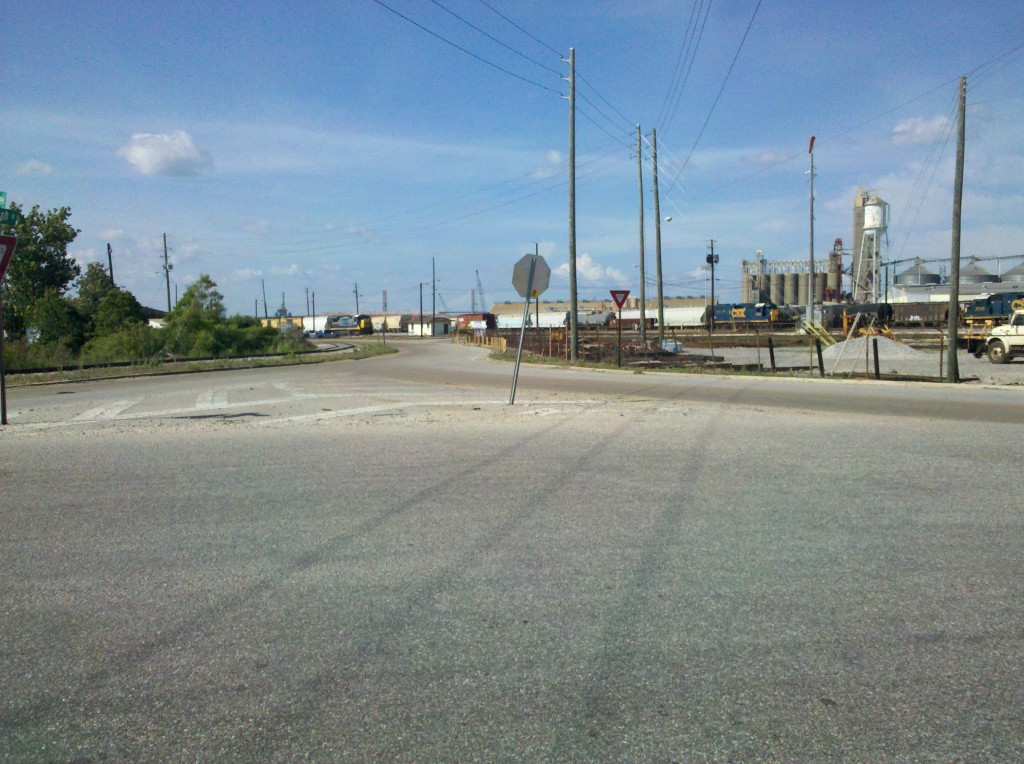
Getting Lost in Mobile's rail yards
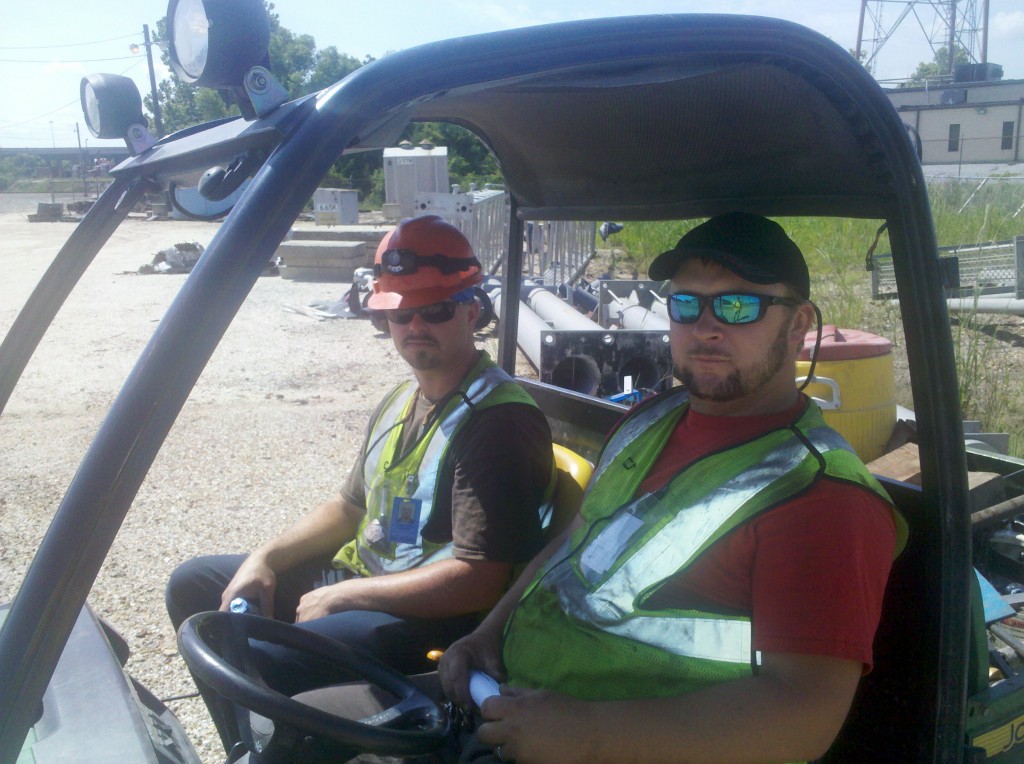
Lost among Mobile's rail yards, local rail workers not only help me to untangle the maze of roads I'm in, they also offer me bottled water on this hot day-- Great Guys!!
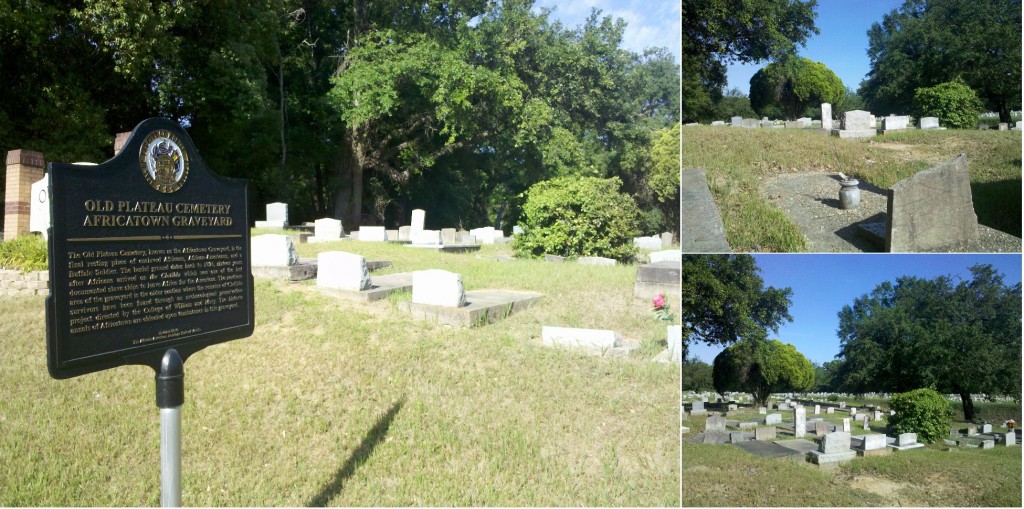
Africatown: Visiting a slave graveyard for the first time.
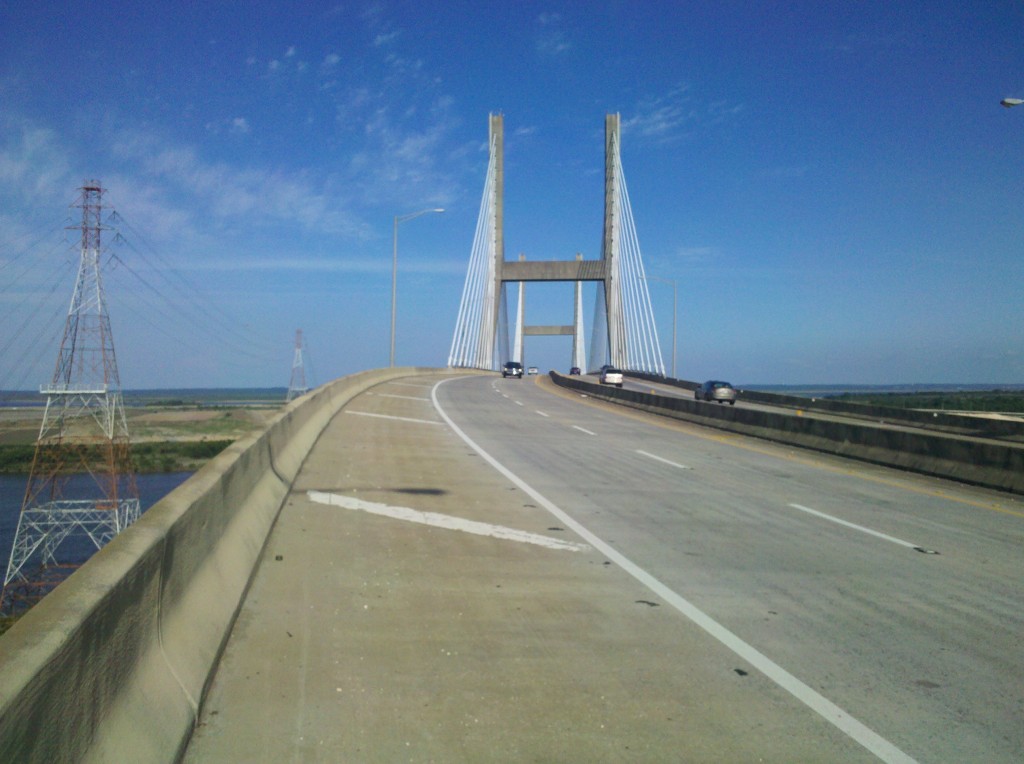
It's dangerous to walk across large, intimidating bridges such as the Cochrane–Africatown USA Bridge, and fortunately, I rarely have to cross such bridges to connect all the steps. Had there been no roadside shoulder, I would have been forced to accept a ride across. But with a wide shoulder, I put on my bright vest and walk straight across such bridges. At a good pace, the Cochrane–Africatown USA Bridge still took be about 30 minutes to cross. Luckily, no drivers lost control of their vehicles-- otherwise I wouldn't be here writing this, LOL!
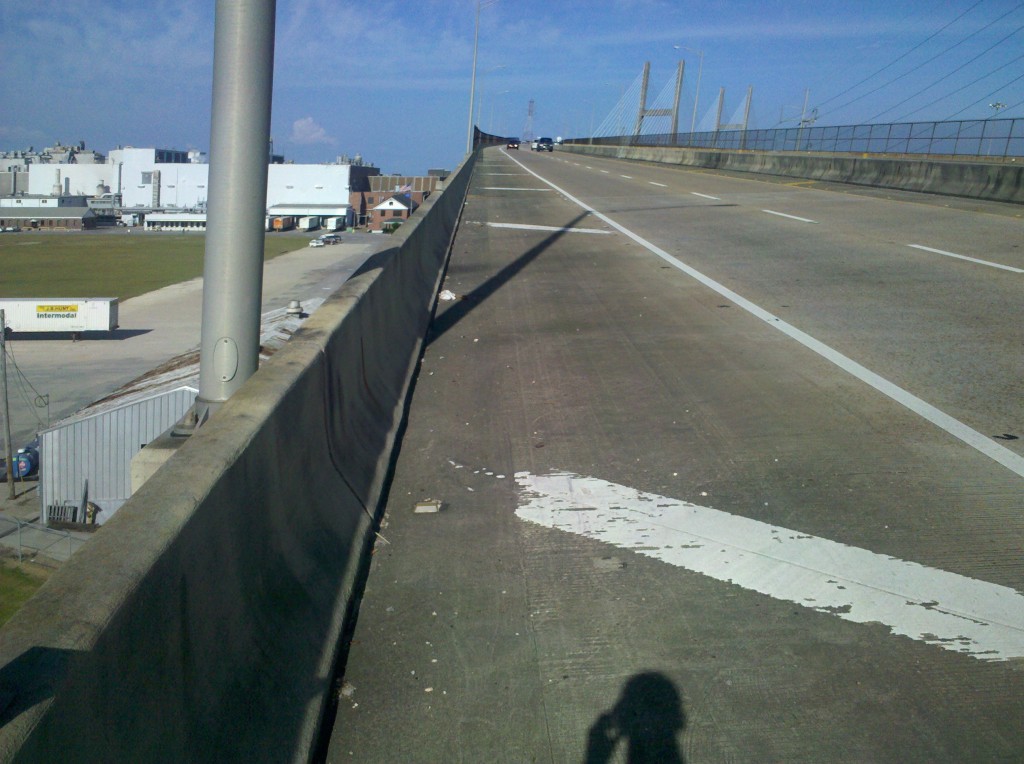
It's dangerous to walk across large, intimidating bridges such as the Cochrane–Africatown USA Bridge, and fortunately, I rarely have to cross such bridges to connect all the steps. Had there been no roadside shoulder, I would have been forced to accept a ride across. But with a wide shoulder, I put on my bright vest and walk straight across such bridges. At a good pace, the Cochrane–Africatown USA Bridge still took be about 30 minutes to cross. Luckily, no drivers lost control of their vehicles-- otherwise I wouldn't be here writing this, LOL!
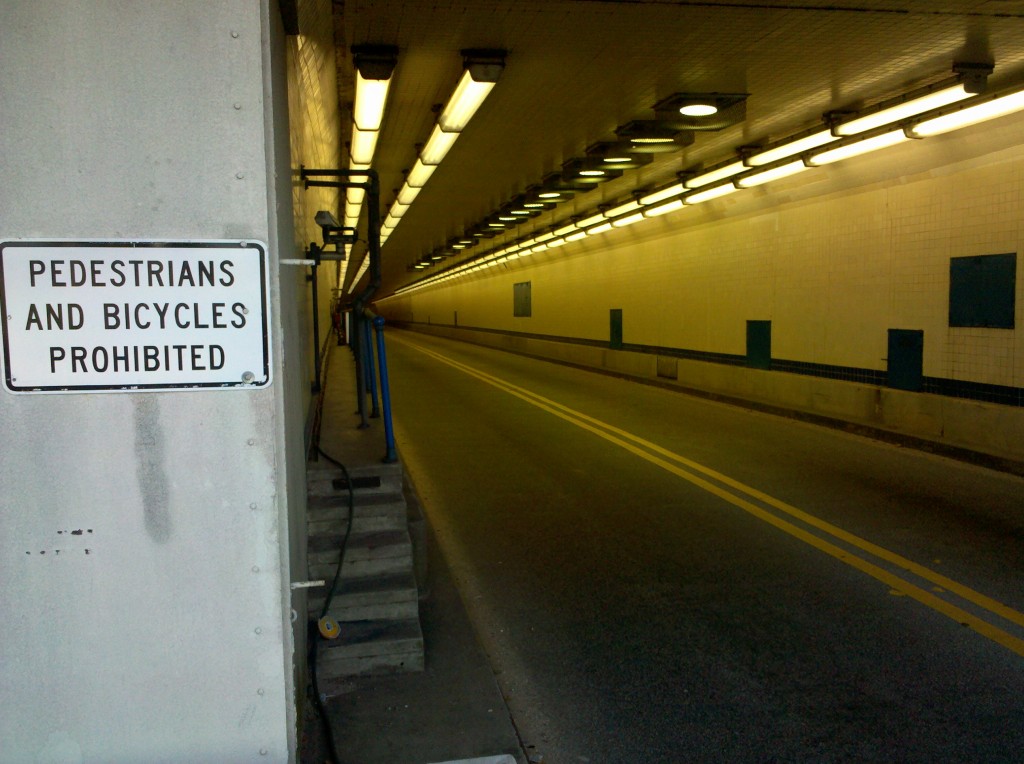
Walking many miles out of my way to go up and over the Cochrane-Africatown USA Bridge was done simply to take all the steps possible while avoiding this small, three-quarter-mile tunnel that connects downtown Mobile with the eastbound portion of Hwy 90. I would have walked the tunnel in a heartbeat if it had been legal, for once I establish my route, I get really picky about the prospect of any extra miles. That said, there's always a precious gem to be found in the rough: I'll always remember the precious, mind-expanding experience of stepping into Africatown USA.
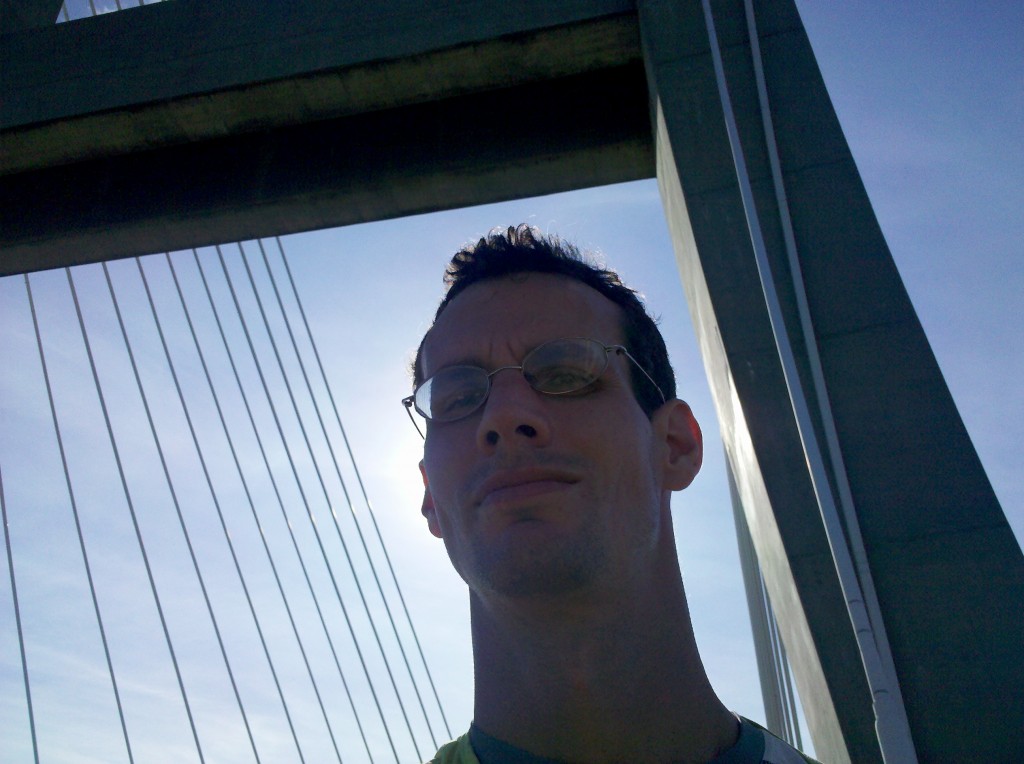
It's dangerous to walk across large, intimidating bridges such as the Cochrane–Africatown USA Bridge, and fortunately, I rarely have to cross such bridges to connect all the steps. Had there been no roadside shoulder, I would have been forced to accept a ride across. But with a wide shoulder, I put on my bright vest and walk straight across such bridges. At a good pace, the Cochrane–Africatown USA Bridge still took be about 30 minutes to cross. Luckily, no drivers lost control of their vehicles-- otherwise I wouldn't be here writing this, LOL!
